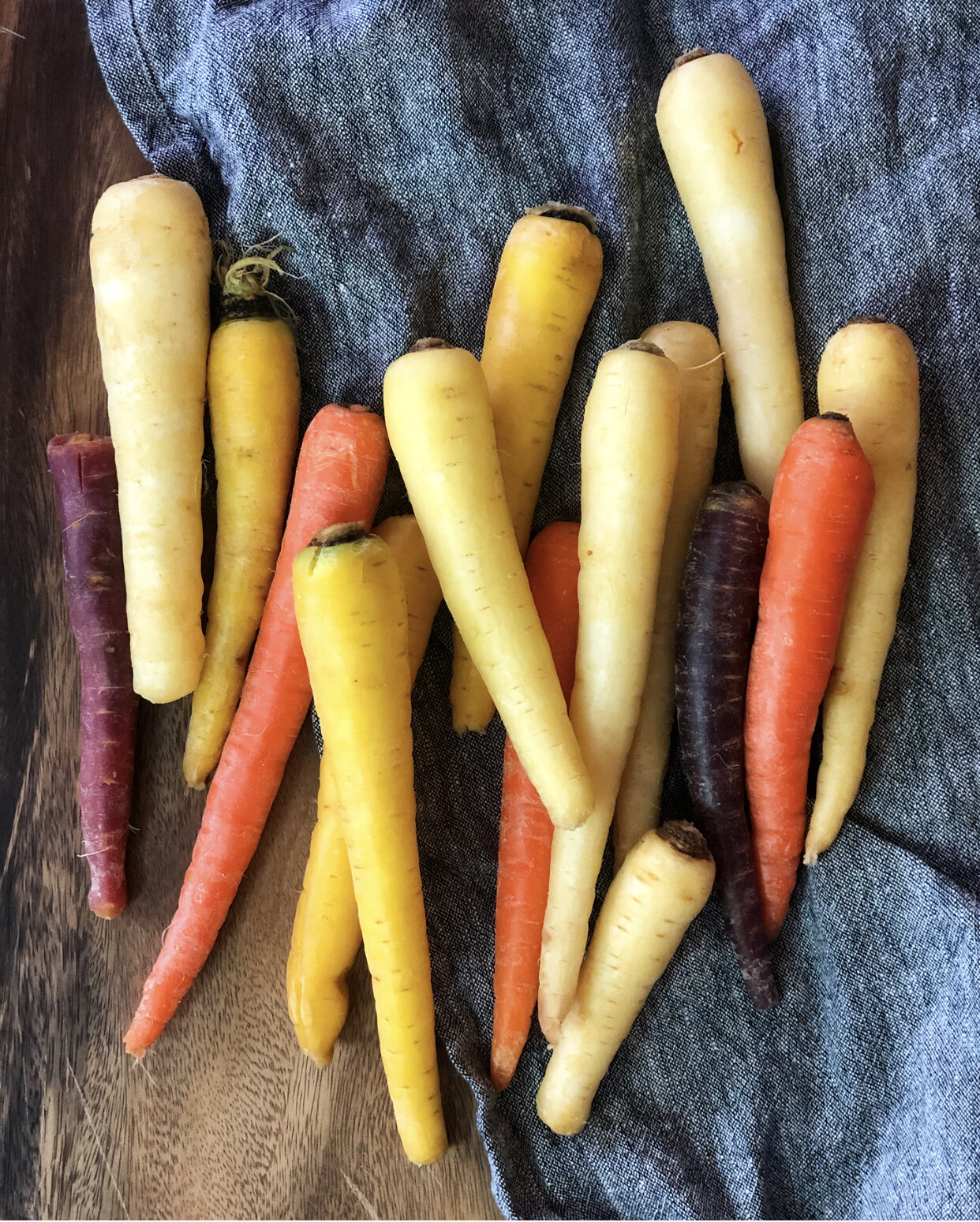How to Start Gardening in March
One of my favorite cool-weather crops: carrots!
If you're anything like me, you're itching to get veggies in the dirt as soon as the snow starts to melt. This post explains exactly what to do this March to get your garden ready for summer!
How to prepare the soil
You can start preparing your garden's soil around mid-March, or 5-6 weeks before the season's last frost. (Pst! the last frost lands anywhere from early April to mid-May in many locations — find yours with the Old Farmer’s Almanac). One of the best ways to prepare your soil for planting is to add a 1- to 2-inch layer of compost. You can use homemade or store-bought compost. Just spread the compost evenly across your garden’s surface and let it sit until you're ready to plant.
Some other pro tips: don't till the garden or remove dead plant material yet, and try not to walk on the soil too much. All of these things can cause unnecessary soil compaction and disrupt pollinator habitats. After the last frost, then you can gently till the top layer of soil to prepare for planting!
What to Plant in the Ground
As long as the worst of winter is over, usually by late March or early April, you can start planting cool-weather crop seeds in the ground. Cool-weather crops prefer temperatures consistently above 40 degrees, but a night or two of frost likely won't kill them. The most popular cool-weather crops include:
Beets
Carrots
Hearty herbs
Onions
Parsnips
Potatoes
Spinach
Turnips
Radishes
These root vegetables, herbs and greens prefer to be planted directly in the soil rather than transplanted. Just wait to sow until 3 weeks before the last frost. Then, plant the seeds directly in the soil, about 1/2-inch deep and 1-2 inches apart, and watch them grow!
What to Start Indoors Now
You can start cool-weather crop seeds indoors in late February to early March. Then by late April to early May, or 1-2 weeks before the last frost, transfer the baby plants to your outdoor garden. Cool-weather crops that can benefit from transplanting include:
Broccoli
Brussels sprouts
Cabbages
Cauliflower
Kale, collards, chard and other greens
One common transplant method is to plant seeds in a dirt-filled egg carton. As the crops grow, you can transfer them to larger and larger pots until you're ready to plant outdoors. Then, dig holes in the soil to plant the crops, leaving plenty of space for them to grow!
By late March to early April, you can start warm-weather crops indoors too. Warm weather crops include:
Cantaloupes
Celery
Corn
Cucumbers
Eggplants
Green beans
Okra
Peppers
Tomatoes
Watermelons
Zucchinis
After the last frost date, you can plant these warm-weather starters in the garden just as you did with the cool-weather transplants! By that point, you can begin planting other summer crop seeds directly in the ground as well.

